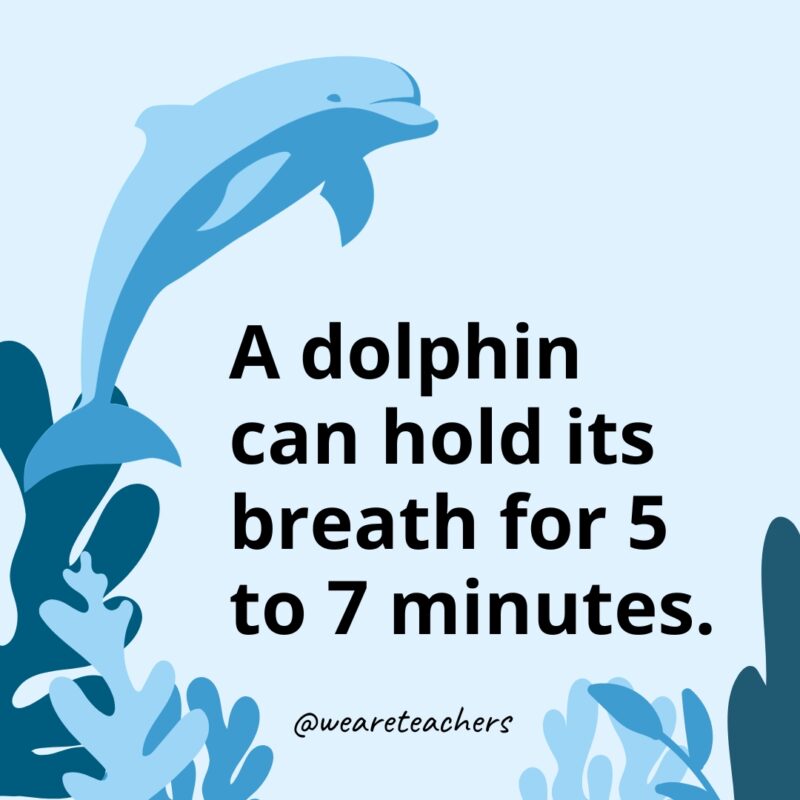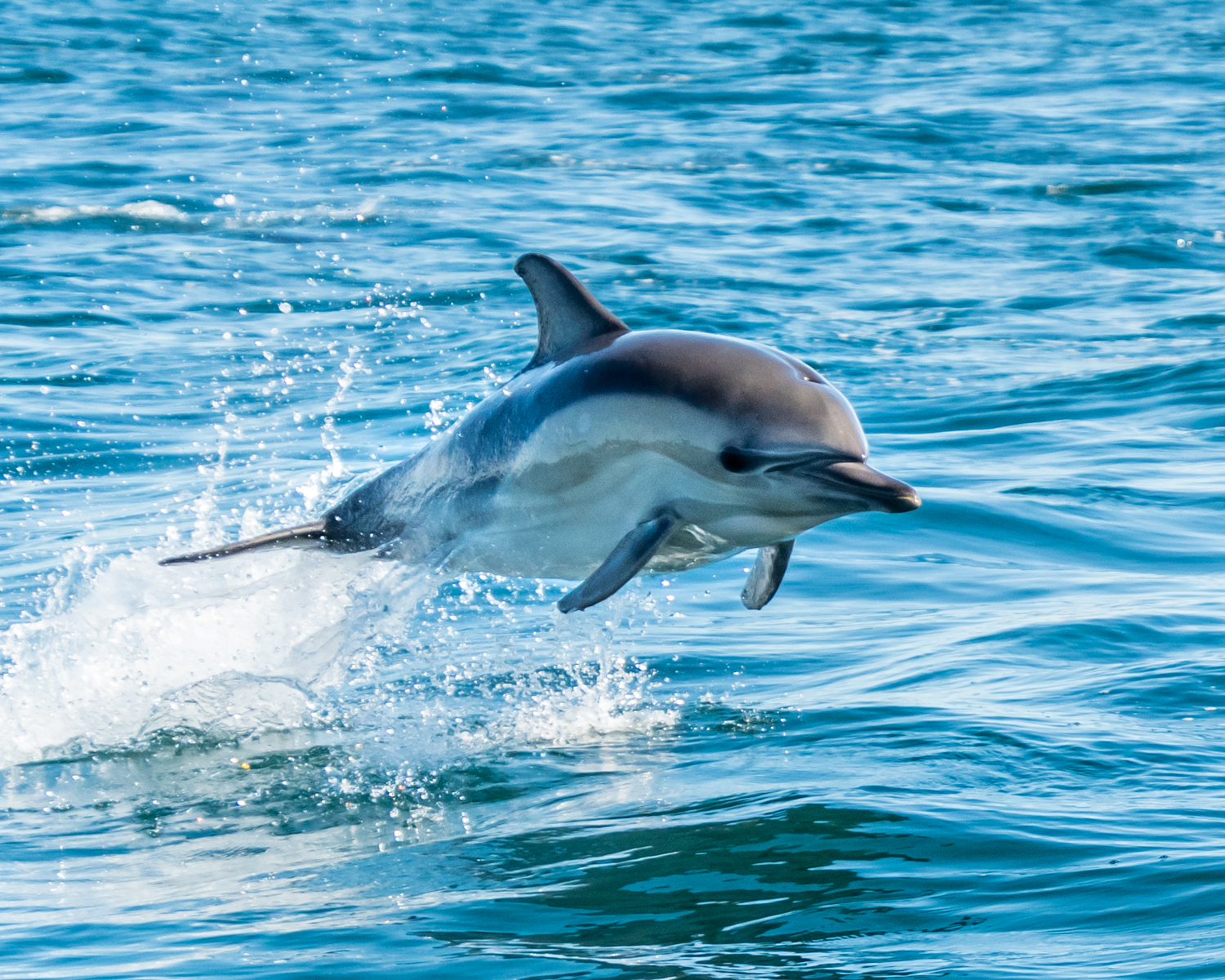Enjoyable and Educational Dolphin Facts for Kids and Adults Alike
Enjoyable and Educational Dolphin Facts for Kids and Adults Alike
Blog Article
Unveiling Dolphin Details: Nature's Intelligent Marine Mammals
Dolphins, typically related to as one of the sea's most smart occupants, exhibit an interesting selection of actions and social structures that warrant closer examination. With over 40 distinct species, these marine mammals not only show impressive interaction abilities and complicated social communications but additionally have sophisticated cognitive capacities that test our understanding of non-human intelligence.
Dolphin Types Variety
Dolphins are a diverse group of marine mammals coming from the family members Delphinidae, which incorporates over 40 distinctive varieties. This family members consists of well-known species such as the common bottlenose dolphin (Tursiops truncatus), the whale or awesome whale (Orcinus orca), and the risso's dolphin (Grampus griseus) Each types displays special physical attributes, behaviors, and adaptations that enable them to prosper in various marine settings.
Dolphin varieties differ considerably in size, ranging from the little Maui's dolphin (Cephalorhynchus hectori) at about 1.2 meters to the whale, which can get to sizes of up to 9 meters. Their pigmentation also differs, with some species displaying striking patterns that aid with camouflage or social signaling. Furthermore, dolphins populate diverse environments, from coastal regions and estuaries to the open ocean, showcasing their versatility.
Study right into dolphin varieties variety highlights the ecological value of these animals, as they play essential roles in marine ecological communities. Comprehending the various species is important for preservation efforts, as numerous encounter hazards from environment loss, contamination, and climate modification, necessitating targeted security measures to ensure their survival.
Social Frameworks and Actions
The intricacy of dolphin species is mirrored in their detailed social structures and habits. Dolphins are understood for their very social nature, commonly creating groups called vessels, which can vary from a few people to over a hundred. These cases are generally composed of member of the family, showcasing a matrilineal structure where women play a main role in preserving social bonds and supporting spawn.

Furthermore, some species of dolphins, such as whales, show facility social actions that can include sub-pods or clans with unique cultural practices. These social frameworks are important for the survival and wellness of dolphin populations, as they promote communication, cooperation, and the transmission of expertise across generations. Recognizing these social dynamics is vital for preservation initiatives and the defense of their natural environments.
Communication Strategies
Among the various approaches of interaction, dolphins make use of an innovative selection of communication strategies that facilitate social communication and control within their sheathings. These techniques include vocalizations, body language, and echolocation, each offering distinctive features in their social communications.
Dolphins generate a vast array of clicks, whistles, and here are the findings pulsed sounds, which act as their primary singing interaction. Each dolphin has an unique signature whistle, comparable to a name, that permits individuals to determine each other also in big groups. These vocalizations can communicate different messages, such as informing others to threat or coordinating team movements index during searching.
In enhancement to articulations, body language plays a critical role in dolphin communication. Dolphin poses, such as jumping, rotating, or also subtle shifts in positioning, convey moods and intents. Hostile display screens might deter rivals, while lively habits can enhance social bonds - Dolphin Facts.
Echolocation, a biological finder system, further help in navigation and hunting. By emitting sound waves and interpreting the returning echoes, dolphins can situate target and obstacles properly, showing their impressive versatility in complicated aquatic atmospheres. Collectively, these communication methods underscore the detailed social lives of dolphins, highlighting their intelligence in browsing their undersea globe.

Intelligence and Issue Addressing
Identified for their advanced interaction skills, dolphins additionally exhibit exceptional knowledge and problem-solving capabilities that further boost their social communications. Their cognitive capabilities are confirmed by their capacity to learn complex jobs, understand abstract ideas, and adjust to various ecological obstacles. Research has revealed that dolphins can resolve complex puzzles, showing not only their cognitive versatility yet also their capability for preparation and foresight.
Dolphins typically participate in cooperative searching strategies, showcasing their ability to work as a natural device. This teamwork needs sophisticated analytic abilities, as they must evaluate their atmosphere, determine possible prey, and coordinate their actions to achieve a common goal. Furthermore, dolphins have actually been observed using tools, such as aquatic sponges, to protect their noes while foraging on the ocean floor, additional exemplifying their ingenious problem-solving abilities.

Human-Dolphin Communications
Human-dolphin interactions have actually astounded lovers and scientists alike, highlighting the facility relationship between these intelligent marine creatures and humans. From ancient times, dolphins have been shown in art and folklore, symbolizing harmony and intelligence (Dolphin Facts). Modern communications range from scientific research study and preservation initiatives to recreational activities like dolphin swimming and viewing with dolphins
Research study has demonstrated that dolphins possess progressed social frameworks and interaction skills, which promote their interactions with humans. These encounters often promote emotional links, with many individuals reporting feelings of pleasure and empathy during such experiences. However, it is essential to come close to these interactions with care, as human tasks can disrupt dolphin actions and habitats.
Conservation campaigns significantly focus on advertising accountable interactions, ensuring that human interest does not compromise dolphin well-being. Education programs aim to increase awareness concerning the environmental significance of dolphins, stressing the need for lasting methods.
Verdict
In recap, dolphins exemplify exceptional intelligence and flexibility within diverse marine atmospheres. Proceeded research and awareness are important for fostering a much deeper understanding of dolphins and promoting their welfare in a progressively intimidated ecosystem.
Dolphin varieties differ dramatically in dimension, ranging from the small Maui's dolphin (Cephalorhynchus hectori) at approximately 1.2 meters to the whale, which can get to lengths of up to 9 meters. Dolphins display a variety of social interactions, including grooming and physical get in touch with, which serve to strengthen partnerships and establish power structures.
Identified for their advanced interaction skills, dolphins also display amazing knowledge and analytic capacities that even more enhance their social interactions. Modern communications range from clinical study and conservation initiatives to entertainment activities like dolphin watching and swimming with dolphins.
Research has actually shown that dolphins have advanced social structures and interaction abilities, which promote their communications with people.
Report this page